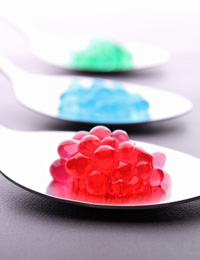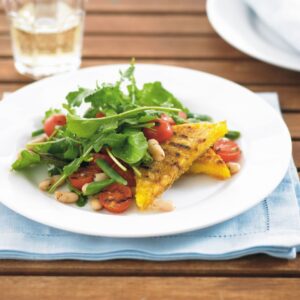
A couple of weeks ago I was lucky enough to head across the Tasman for some of the events of the Crave Sydney International Food Festival.
It was a weekend of star chefs, extraordinary meals and a lot of inspiration. Some of the world’s top chefs showcased their cooking, and there were certainly some ‘out there’ dishes. Think ‘flower bomb’ desserts made with orbs of sugar blown like glass and violet fairy floss; onion and olive oil ice cream; Parmigiano-Reggiano ‘fog’. This is food cooked in kitchens like science labs; it’s food as an intellectual exercise. Exciting and fascinating for sure, and bearing very little resemblance to the food most of us eat every day.
I’m not sure how I feel about that. On one hand I enjoy the creativity and inventiveness of this kind of food; all the molecular, mad-scientist craziness of it. There is the ‘trickle-down’ theory, as applied in fashion, which suggests that this ‘high fashion’ food will eventually influence what we the masses eat. It’s certainly possible to see trends in restaurant food emerge and change, as with fashion. On the other hand, though, I worry that all this technical wizardry just contributes to the positioning of cooking as something complex and difficult; something not to be attempted by mere untrained mortals. As the gap widens between high-end-restaurant cooking and what is actually possible in a home kitchen, will we be ever more tempted to just give up and leave the cooking to the experts?
I really hope not, since cooking is one of the joys of my life and something I love to share. But I was slightly disquieted to read the results of a recent Weight Watcher’s survey which said that 53 per cent of young NZ adults consider heating chicken nuggets to be cooking!
In the end, one of my most enjoyable meals in Sydney was one of the most down-to-earth. It was a ‘100-mile meal’ at Fort Denison, a tiny rock of an island which sits a 10-minute ferry ride from Circular Quay in the middle of Sydney Harbour. From a kitchen crammed into the tiny stone fort, chef Andrew Prasad made me a fabulous meal including a colourful array of seafood, cheese, eggs, meat and produce, some of which had come no further than from his Dad's suburban Sydney garden. The idea of the 100-mile meal is that all ingredients are to be sourced from within a 100-mile (160km) radius. Now this is a cheffy concept we can adapt at home. In fact, we’re lucky in NZ that eating local is something that’s relatively easy to do, especially when we grow our own food and can shop at local farmers’ markets. Eating local makes nutritional sense, too. Food hasn't travelled far to get to us; it has fewer 'food miles' on the clock and as a consequence it's fresher and likely to retain more nutrients.
Now it’s spring, the prospect of eating local becomes easier and more exciting. We have asparagus to enjoy, and tomatoes starting to taste better and cost less, and the prospect of capsicums and courgettes and summer stone fruit. Most supermarkets now show where produce comes from, so keep an eye out. Why not try your own 100-mile meal?
www.healthyfood.com










